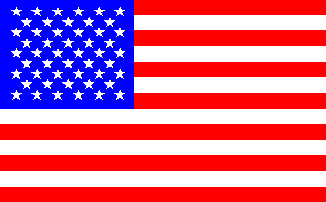
The Continental Tang Soo Do Federation
Flags
Continental Tang Soo Do Federation Flag
Dae-Ryook
Tang Soo Do
Heop-Hae
Kee

|
SYMBOL |
MEANING |
|
|
Globe - represents Continental. |
|
|
Oom / Yaang - |
|
|
Leaves - represents youth and health. |
|
|
Six Berries - represent the 6 continents where |
|
|
Fist - represents Justice and Power. |
|
|
Korean Character that means
|
|
|
Master’s Black Belt -
represents the goal of all |
|
|
Red Korean Characters: Tang Soo Do |
TAE GOOK KEE
The National
Flag of Korea

STARS &
STRIPES
The National Flag of America

The 50 star flag was raised for the first
time officially at 12:01 AM on July 4,1960 at Fort McHenry National
Monument in Baltimore, Maryland.
The flag of the United States of America consists of 50 white stars on a
blue field, representing the 50 states of the union, There are 13
alternate red stripes representing the 13 original state.
Originally, when the stars and stripes were adopted, the 13 stars were
arranged in a circle representing a new constellation in the Heavens.
Every time a new state was added, a new stripe and star were added to
the flag. However, it became evident the flag would become burdened with
stripes. Congress there upon ordered that after July 4, 1818 the flag
would have 13 stripes.
The United States, a bright shining star in the world. Our forefathers
wanted a symbol of this “newness” and “permanence” so they chose stellar
creations in a blue sky with vibrant colors to symbolize our strength,
the American Flag.
The colors of the American Flag symbolize the virtues of the entire
nation:
Blue is for vigilance, perseverance and justice
White is for purity and innocence
Red is used to symbolize hardiness (strength) and valor (courage)
13 Stripes for the 13 original states.
50 Stars for the 50 states
Continental Tang Soo Do Federation